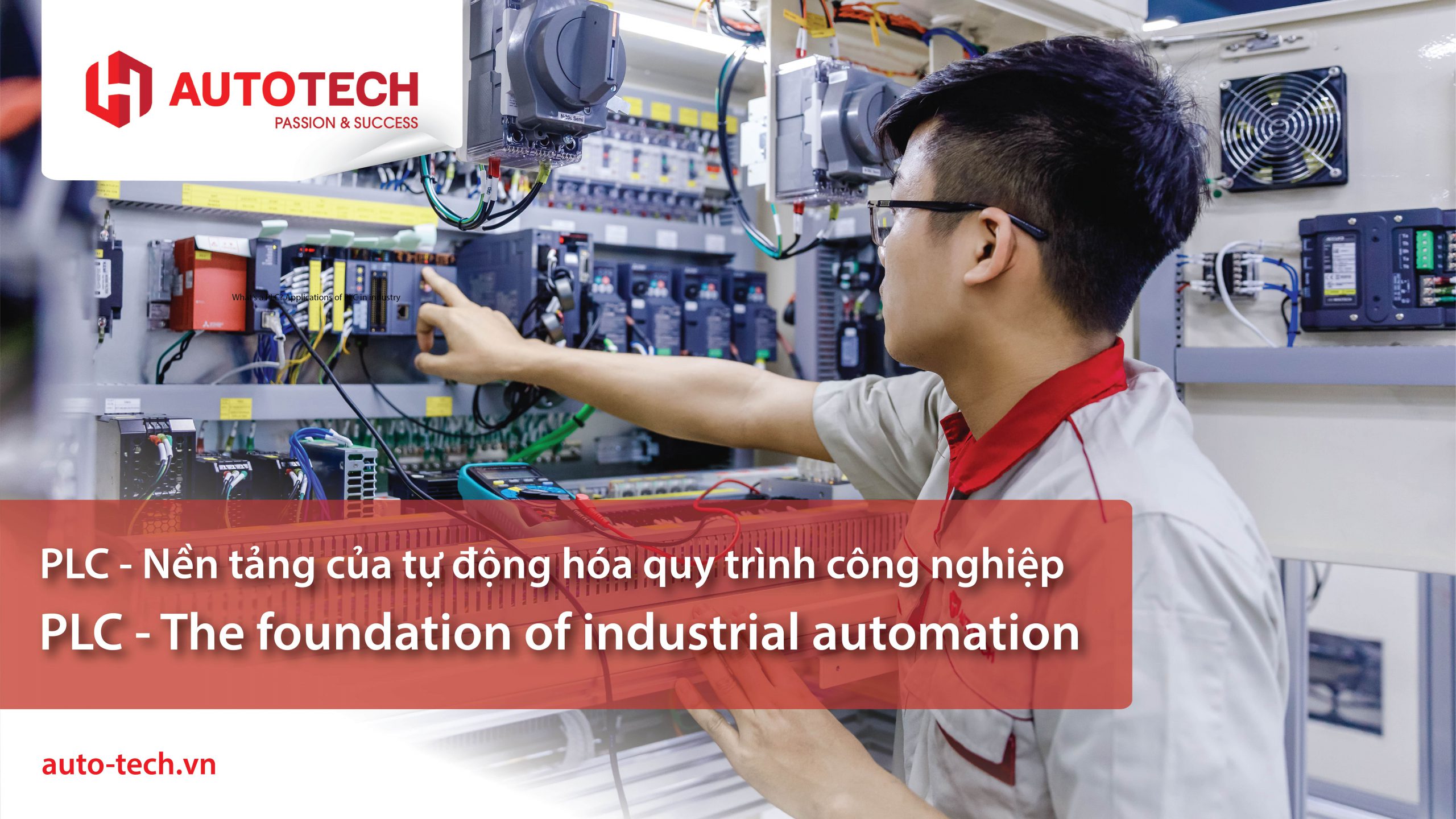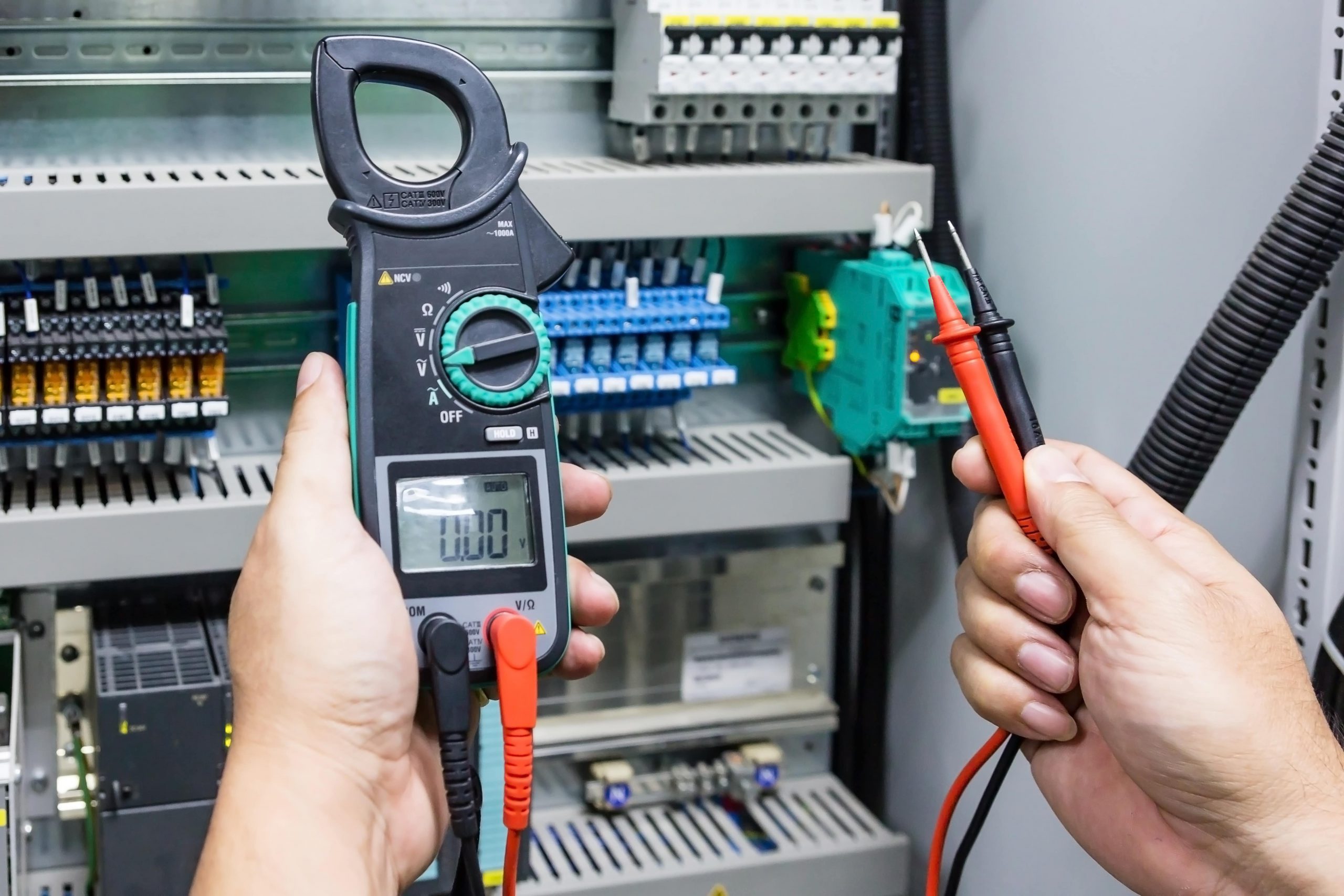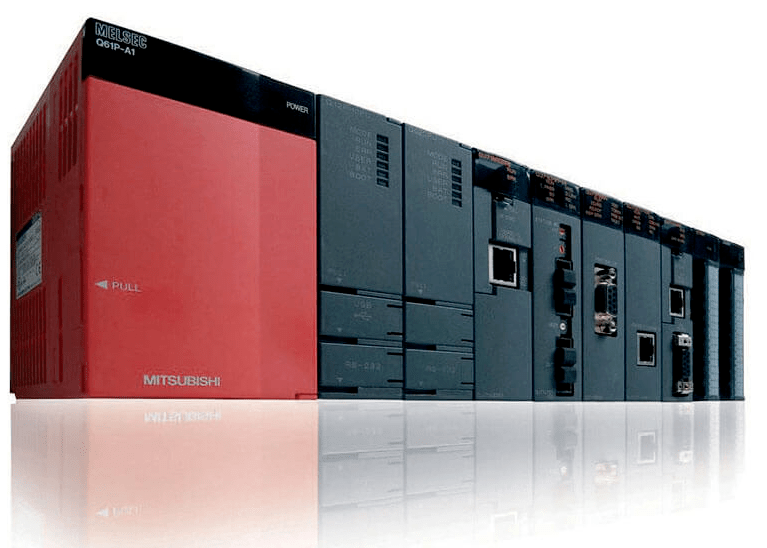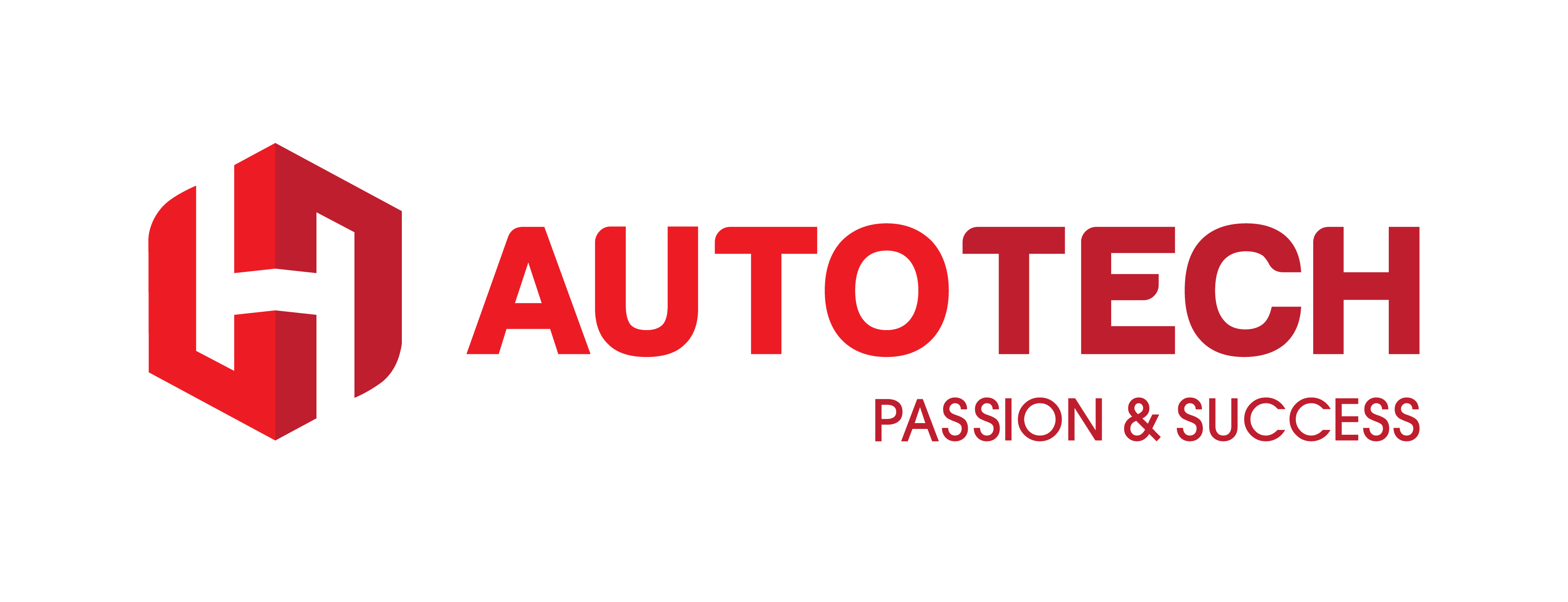It can be said that the birth of PLC marked a new breakthrough in modern industrial production, completely changing the control system as well as the previous concepts of controller programming. PLC plays an important role, considered as the foundation of industrial automation because of its flexibility, ease of programming as well as connection of 4.0 modern production systems.

What is a programmable logic controller (PLC)?
used as a standalone unit, programmed for use in industrial process monitoring and automation. These controllers can automatically control a specific process, machine function, or even an entire production line.

The PLC will also perform basic interventions, triggering outputs when pre-programmed limits are met. PLC have flexible hardware; can operate in difficult conditions requiring advanced options and real-time usage. For example, PLC can control some of the more complex processes in industrial operations, such as monitoring motors and running machines.
These devices are flexible and easy to program and can work in conjunction with a variety of production management solutions. Modern PLCs are manufactured to upgrade relays and timers formerly used in industrial machinery.
PLC is often associated with SCADA systems to control industrial processes by supporting functions for data acquisition and storage, man-machine interface, monitoring and alarm management.
Differences between PC and PLC
Programmable logic controllers (PLCs) are often confused with the various control computers (PCs) found at any factory workstation, since both can govern the movements of an industrial robot via the information received from a superior software program. Additionally, the hardware structures of both are similar: they have a CPU, a set of input signals, output signals and a memory unit.

Nevertheless, programmable logic controllers (PLCs) don’t have an operating system, which means they can’t use databases. On the other hand, a PC runs on an operating system (OS), where software such as Galileo (used by Mecalux in its facilities) is installed. This software collects information on the status of the production system and receives instructions to activate their movements.
In any event, a PLC control system has numerous advantages over a computer (PC) prepared for industrial activity: it offers the possibility to incorporate security programs with safer inputs and outputs, ideal for processes with no margin for error.
Moreover, programmable logic controllers are a perfect tool for the logistics and production sectors, as they’ve been ruggedised; that is, they’re specially designed to operate in harsh environments, with protections from high-frequency vibrations, corrosion, temperature changes and so on.
What makes up a PLC?
Three main components make up a PLC. The first two components consist of an input module and an output module that combined make up the I/O inputs. These are linked together by the CPU or central processing unit. This is the computer and central component of the PLC. Let’s take a more in-depth look at each main component as well as some of the ancillary parts of the PLC

1. Power supply unit: The task of converting AC voltage to low voltage (from 220V – down to 24V or less) provides a stable power supply for input and output devices.
2. Inputs and outputs (I/O): A PLC consists of various input and output modules. The input module detects the state of input signals from various sources such as buttons, switches and various sensors. On the other hand, output modules are used to control devices such as relays and lights.
3. Central Processing Unit (CPU): Considered the brain of the PLC with octagonal or hexagonal microprocessors. It performs all the processing related to the input signals to control the output signals based on the control program.
4. Memory unit: A PLC needs to have enough ROM and RAM to execute the automation processes for which it is intended. The controller uses ROM to store the operating system and commands and RAM to execute its functions.
5. Programming unit: A platform that allows users to view and modify code running on a PLC, be it a handheld device or a laptop or a computer.
The role of PLC in industrial automation
In the era of industry 4.0, PLC plays an important role as the control center, connection and main interface of human-machine interaction (HMI). Technological advancements such as robots, artificial intelligence (Ai), high-tech sensors, cloud computing and big data are set to completely change the face of industrial production.
1. Process control and automation
The fundamental role of a PLC is automation processes by sending programmed control functions to output devices based on signals received from connected input devices. An input device measures and transmits data from your system, such as a sensor, switch, thermometer, or relay. In contrast, output devices receive data or commands from the PLC to execute a specific function. For example, an input device may signal to the PLC that the pressure in a line is too high. The PLC would then automatically send a programmed command to the output device, which in this scenario is a valve, to open, effectively reducing the pressure.
Other control engineering programmed by a PLC can include turning on or off a motor to run a conveyor, raising or lowering temperature via a heat exchanger, or displaying an alarm or status on an HMI screen when abnormal system parameters occur.
2. Combined with SCADA for data collection and machine monitoring
As mentioned above, PLC monitors and collects data from connected inputs and machinery. Because of this, software programs, such as SCADA and Machine Monitoring systems, can connect to PLC to process collected machine data and display useful information, such as production reports, live-trends, alarm notifications, OEE metrics, cycle or batch status, and more.
With the information visualized, managers and operators can better analyze their production performance and make data-driven decisions to improve efficiency and output. Additionally, the ability to receive immediate alarm notifications allows operators to respond more quickly to diagnose and remedy problems, which can reduce downtime and costs.
3. IIoT and industrial machine learning
IIoT applications and industrial machine learning algorithms are new and evolving technologies making their way into manufacturing facilities. Even with the emergence of these new technologies, PLC will continue to play an essential role as a processor of real-time manufacturing data.
Industrial machine learning algorithms work by improving themselves through experience. To gain the necessary experience, machine learning algorithms study production data collected by PLC to find patterns, which enables the algorithms to make predictions and decisions without needing to be pre-programmed.
The result is a system that can provide predictive maintenance and remaining useful life information to prevent downtime, propose responses to issues that may arise, and improve quality control with actionable production insights.
PLC in industrial automation applications
In the modern industry, PLC plays an important role, especially in smart manufacturing. With many outstanding advantages in terms of cost and performance, PLC is widely applied, popular in automation electrical panels of systems such as water supply, wastewater treatment plants, production and processing, packaging, automated production line monitoring, heavy industry, etc.

Specifically, the plc is used in technology to control the robot arm to pick up the workpiece from the conveyor, bypass the CNC machine’s workbench, or control the robot to put materials on the conveyor, or perform canning, labeling, alarm system, etc.
In addition, the programmable logic controller is considered as an automation solution used in process monitoring applications in plating plants, electronic component assembly lines in factories, automatic production lines, etc. product quality control, etc. by means of limit switches or sensors.
In addition, the programmable logic controller is considered as an automation solution used in production process monitoring applications in factories such as electronic component assembly lines, product quality inspection lines, etc. by means of limit switches or sensors.
The future of PLC in industry 4.0
In the future, PLC can be programmed and configured to operate more reliably, and most likely, they will be made of different materials such as optical fiber – a material much more durable than electronic signals, especially in harsh environments such as factory floors.
Besides, using IIoT technology, PLC can also operate remotely from a suitable location, away from harsh conditions to ensure more efficient operation. This is really important, because the sensors and processes and machines in the PLC, if properly maintained, will work more optimally.
One thing worth mentioning, the PLC will remain the central processor of real-time manufacturing processes and better communicate with input sensors through IIoT. By integrating with systems such as SCADA or MMS, PLC will improve data collection capabilities and better support machine learning programs in the future.
Example: Data from a PLC, combined with data from sensor and SCADA to show a big picture of data from production in the factory. Analytics tools can then enable managers and many other employees to make better use of resources, task-based scheduling, and vendor scheduling and other critical functions to generate data more efficiently.

In short, despite the age of more than 50 years of establishment and development, the PLC control system promises to still play an important role in the upcoming industry 4.0 context. With its simplicity, ease of adjustment and reliability, PLC is very suitable for businesses that are starting the process of factory digital transformation, moving towards building a smart factory model.
Autotech Machinery - The leading company in the field of automation in Vietnam
Autotech Vietnam Machinery Manufacturing Joint Stock Company is a leading industrial machine manufacturing company in the field of automation. Autotech Machinery specializes in providing a wide range of products and services such as mechanical engineering, machinery line upgrading & improvement, automation services (PLC programming, Robot, Vision,…), smart warehouse solutions, smart factory building solutions, etc. to serve the diverse needs of factory digitization for industrial production enterprises in Vietnam.
With more than 10 years of experience in implementing many projects in the field of automation, the team of Autotech engineers clearly understand the structural characteristics, operation method as well as the advantages and limitations of PLC to bring the most optimal PLC automation solution to corporate customers in Vietnam.

Moreover, with a professional working style, Autotech we are confident to satisfy and meet all the needs of our customers.
Speak to Autotech Experts
Contact Autotech experts to get professional advice for your factory & business.
- Headquarters: No. 11-15, Street 17, Industry – Urban – Service Complex VSIP Bac Ninh – Dai Dong Commune – Tien Du District – Bac Ninh Province
- Ho Chi Minh City Branch: No.49, Street 12, KP5 – Hiep Binh Chanh Ward – Thu Duc City – Ho Chi Minh City
- Hotline: (+84) 903 232 625
- Email: info@auto-tech.vn
Find out more about other products/services here: http://www.auto-tech.vn/home-new/en/san-pham/
Connect with us:
- Website: www.auto-tech.vn
- Linkedin: www.linkedin.com/company/autotechvn
